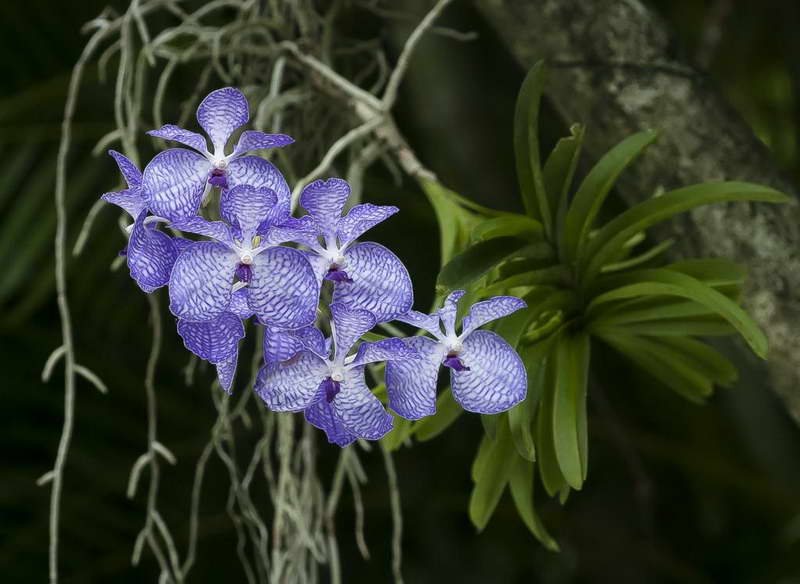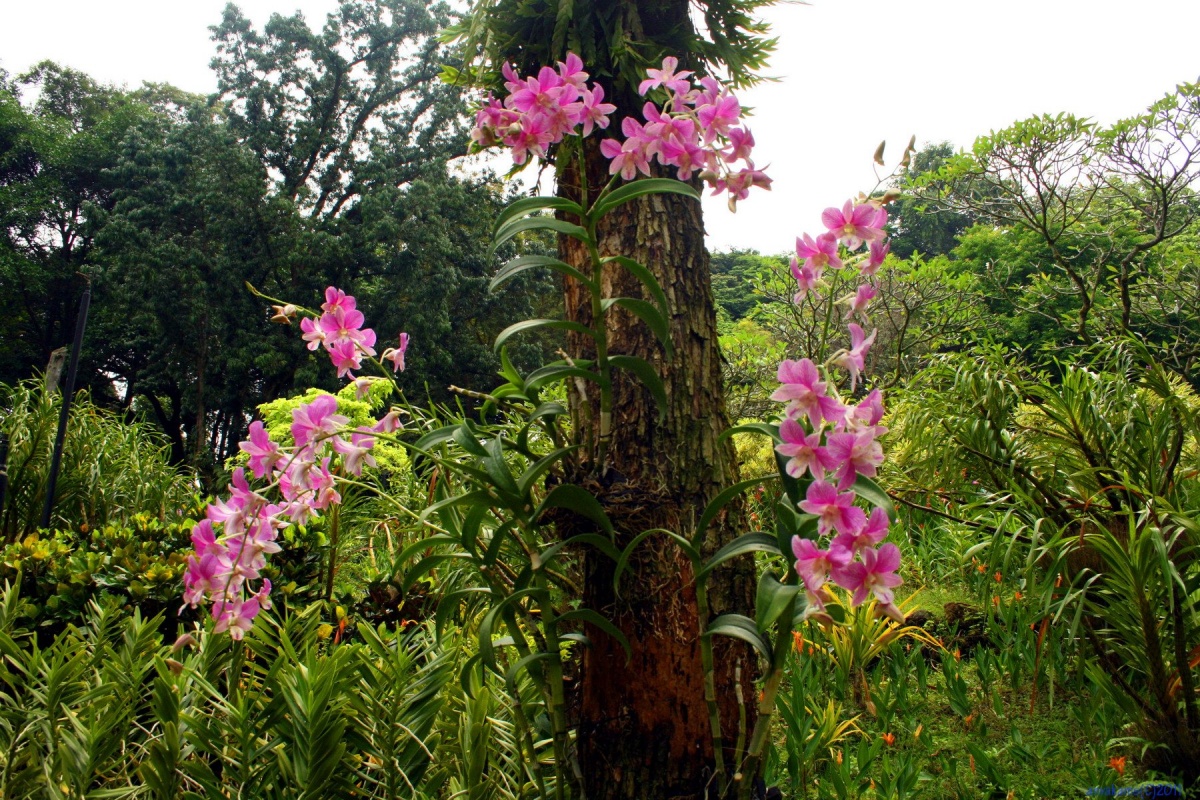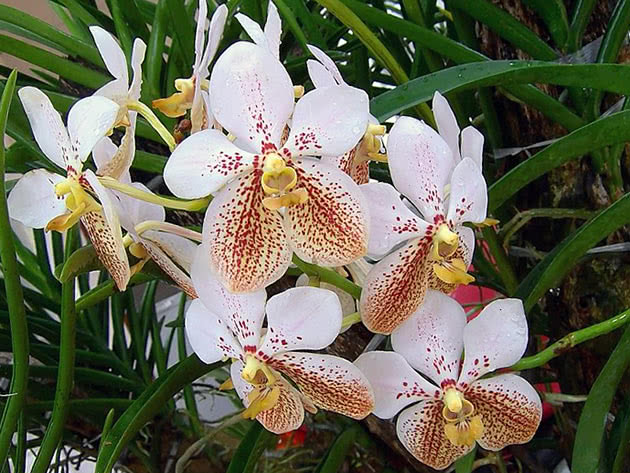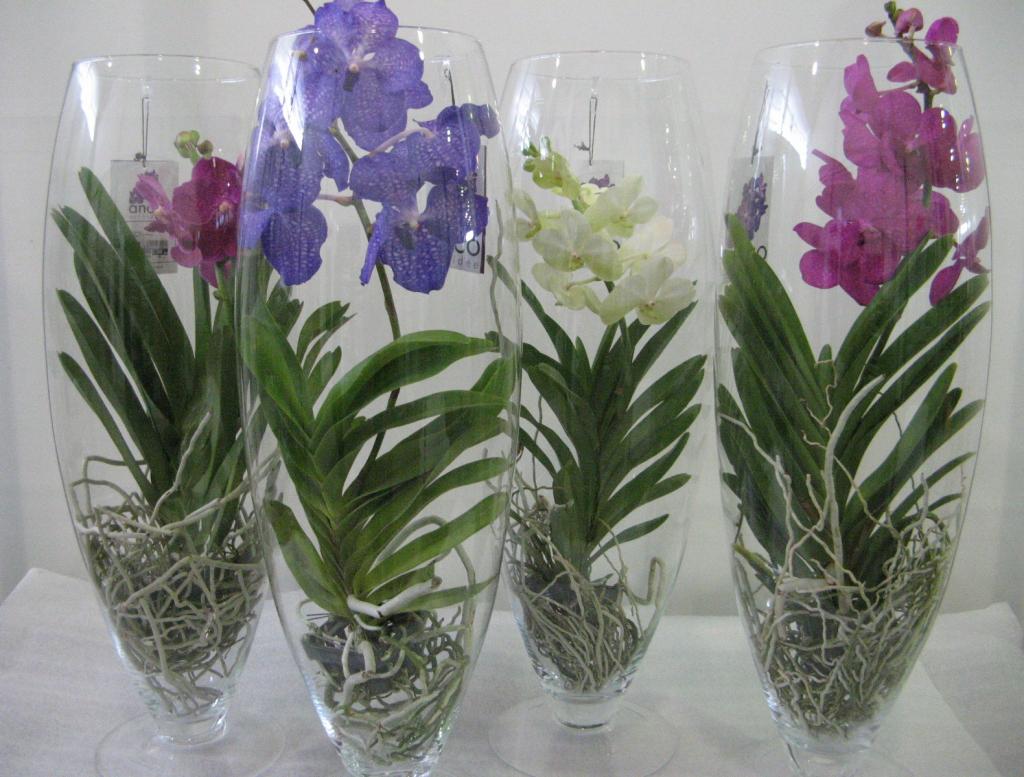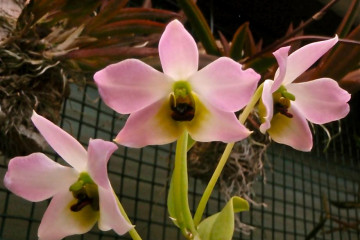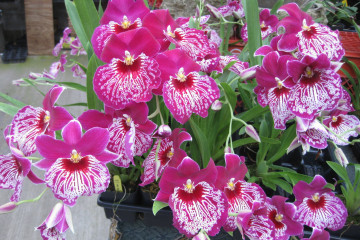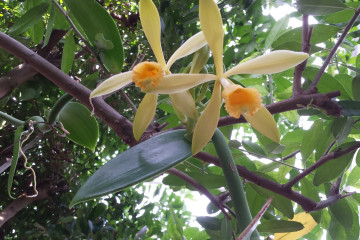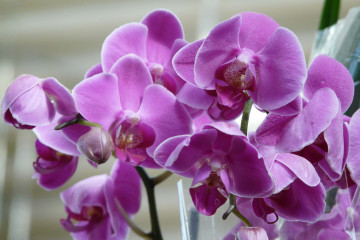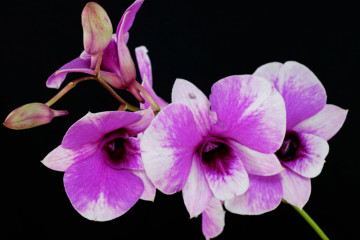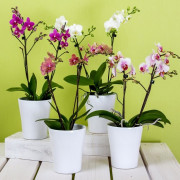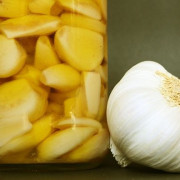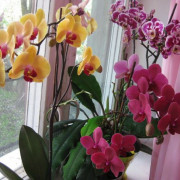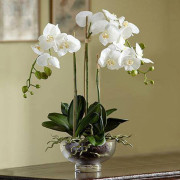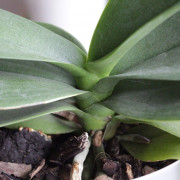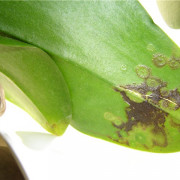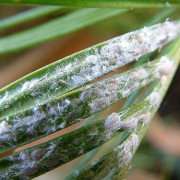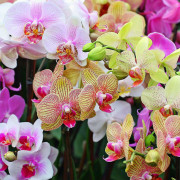Vanda orchid: the main varieties and home care options
Content:
Until recently, it was believed that Wanda could not be grown at home. In general, orchids are very capricious plants and require a lot of attention, but recently, flower growers have increasingly begun to give preference to these particular flowers. Many varieties and varieties are known, differing in shape, color of flowers, size and characteristics of cultivation.
The main types of Vanda orchid varieties
Wanda belongs to the royal varieties of orchids. It owes its name to the Indians, who named this extraordinarily beautiful flower with bare roots hanging down. To date, more than 20,000 species of the Vanda orchid are already known, which are able to grow not only in the wild, but also in indoor conditions.
Distinctive features of this group of orchids are:
- a powerful root system that is able to absorb moisture both from plants and tree trunks, and from the surrounding air;
- the stem reaches a height of 1 m or more;
- foliage has an oval, belt-like shape;
- peduncles drooping or erect;
- from 2 to 15 large flowers are formed on each plant;
- flowers are painted in various shades, have a pleasant aroma.
Wanda Bowles
A distinctive feature of this variety are flowers with a diameter of 5 cm of an uneven dark blue color.
Up to 20 of them are collected in inflorescences. The roots of the plant are very well developed. The leaves are large, the height of the stem reaches 1 m.
Wanda Pratt
Wanda Pratt is an orchid with beautiful reddish-lilac large flowers that does not have a dormant period. With proper care, it blooms several times a year. The stem is dense, up to 1 m high. The leaves are lanceolate, thick.
Wanda blue
The stem of this species is erect, reaching a height of 1 m. The leaves are oval-belt-shaped, growing in 2 rows. Hanging roots are grayish-green in color. The flower arrow extends to a height of 0.5-1 m, at the end it forms a tassel with 6-12 large flowers. Their diameter is about 10 cm, the color is bluish-gray, the veins are painted in a darker shade.
Each flower exudes an extraordinary, very pleasant aroma. This variety has a characteristic feature: over time, the color of the flowers changes to a lighter color.
Initially, flower growers referred to her as Wanda dark blue.
Wanda Daei
Tall plant with typical leaves for this species. The orchid forms about 3-6 delicate flowers with a diameter of about 10 cm. Light petals have a slight waviness along the edge. The numerous roots of this variety simply hang in the air.
Other varieties
In addition to those listed, there are many more varieties of Wanda orchids that can be successfully grown indoors. These include:
- Suarez;
- Comb;
- Great;
- Wanda Ottony (Ottony)
- Vanda Fuchs;
- Vanda Gordon Dillon;
- Vanda Kultana;
- Vanda Roberts Delight;
- Rothschildiana;
- Sansai Blue;
- Monster;
- Reverend Masao Yamada;
- Trikim and others.
Sandera and Vanda tricolor (tricolor) are especially popular. A tricolor orchid of the Vanda species reaches a height of 1.5 m. The leaves are large, located in 2 rows relative to the stem. The flowers do not exceed 7 cm in diameter. 7-10 flowers of a very variegated, unusual color are formed in the inflorescence.
The Sandera variety forms beautiful flowers up to 12 cm in diameter, delicate pink color with a white border. The lip has both red and yellow shades, its size is about 15 cm. The roots are dense, well developed.
Caring for Wanda at home
Wanda Orchid is a beautiful plant, very demanding to care for. It is quite difficult to grow it at home, especially for novice florists. It is even more difficult to get the plant to bloom several times a year.
In case of violation of the growing conditions and improper care, the plants get sick, sometimes they die altogether.
Room temperature and humidity
For the successful cultivation of Wanda, the air temperature in the room should be kept at least + 25 ° C. The humidity level should be around 70-90%. At the same time, the length of daylight hours is provided for at least 12 hours. Special phytolamps are used for illumination. It is recommended to water the plants in two ways:
- spraying the roots;
- the organization of the Wanda orchid baths.
Soil and fertilizing
Every 3 months, the Wanda orchid needs to be fed with lemon juice to strengthen its immune system and stimulate the formation of flowers. To do this, you need to dilute 1 teaspoon of juice in 1 liter of water.
Also in stores they buy special dressings, which are recommended to be used once a month. Some florists advise fertilizing Wanda with water, in which the banana peel was previously soaked.
Streptocarpus (orchid) Wanda differs in that it does not require mandatory planting in the ground. Under natural conditions, it grows in limbo. For indoor cultivation, you can use a large basket.
If this method of growing confuses the grower, then you can take a wide bowl and pour a standard substrate for orchids into it. In this case, it is imperative to make a large number of holes in the vessel so that the roots are provided with the necessary ventilation.
Not so long ago, it became known about a new method of growing Wanda in a glass flask, which was demonstrated by the Dutch. In order to realize this idea, you need a large transparent vase with a wide bottom. Compliance with the rules of care plays a decisive role here.
With this unusual growing method, the orchid is lowered to the bottom of a glass vase. For watering, water is poured directly into a vessel and waited until air bubbles stop rising to the surface, which indicates that Wanda (flower) is drunk. The remaining liquid is carefully drained.
Transfer
Orchid Wanda, care and cultivation in ordinary home conditions for which they cause a lot of trouble for flower growers, does not require frequent and obligatory transplants. If there is a need to move it to a larger container or just replace the substrate, then the flower must first be watered well so that the pieces of bark are better separated from the roots.
Orchid bloom
The Wanda orchid does not have a dormant period, therefore, with proper care, it pleases with flowering several times a year. The flowering period lasts 1 to 3 months. In conditions of short daylight hours, plants need to arrange additional lighting using several lamps: red, blue and standard LED.
Alone, they do not give any effect, therefore, these lighting devices must be used exclusively in combination.
Reproduction methods
Breeding the Wanda orchid involves two main methods, however, at home, flower growers prefer to use the most affordable and effective - lateral processes (or children).
By dividing
If aerial roots form on the upper part of the Wanda orchid, then it is carefully cut off, planted in a container with special soil for these flowers and placed in a warm, humid place (you can build a greenhouse), avoiding direct sunlight. The work is carried out with a pre-disinfected tool, the cut site is treated with crushed activated carbon.
The young plant is not watered, only spraying is carried out until it takes root well and starts growing. After that, you can take care of him according to the standard method.
Side shoots
An orchid of an unusual variety of Wanda and Cattleya, even with perfect care, extremely rarely forms side shoots, called babies. Even if such a miracle happens, then there is no need to rush to separate the young plant from the mother. The sprout must reach a height of at least 5 cm and form its own root.
Only after that, the baby can be cut off from the main stem, planted in a pot with soil mixture for growing orchids and placed in a greenhouse, where the air humidity is maintained at 85%.
After 2 weeks, the young plant begins to slowly accustom to the climate of the apartment. When it reaches a height of 20 cm, it is transplanted into a larger container. It is imperative to treat all cuts with ground cinnamon or charcoal.
Growing Phalaenopsis Wanda indoors is very difficult, the process is troublesome and requires careful and careful care. However, the efforts of flower growers will certainly be justified after the beloved flower will delight not only with luxurious buds, but also fill the room with a fabulous aroma. In addition, it looks very unusual and exotic, therefore it is quite suitable for those florists who are bored with ordinary classics.
